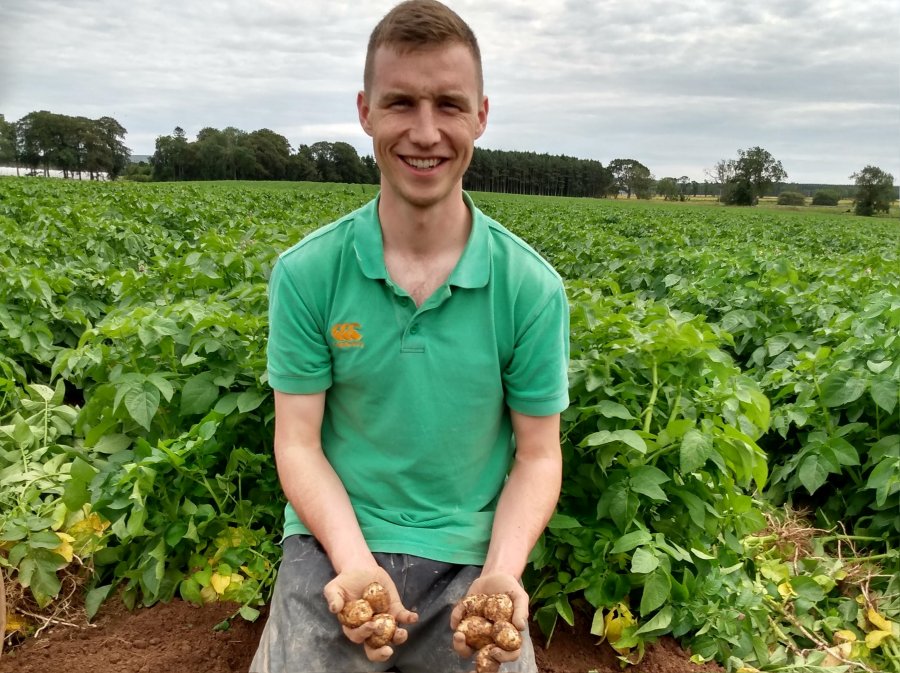
A recent farm-trial used new precision tools to predict tuber size of seed and salad potatoes for growers to maximise yield and profit margin.
SAC Consulting, part of Scotland’s Rural College (SRUC), partnered with precision farming company SoilEssentials and farmer-owned cooperative Grampian Growers.
The 12-month precision farming collaboration supported the uptake of the innovative Tuberzone potato technology among growers in eastern Scotland.
Project facilitator, Zach Reilly of SAC Consulting, said the value of projects like these was working collaboratively to develop tech that was 'compelling' for growers to adopt long-term.
“The flow of new technology into agriculture is exciting but we need to assure farmers that it will meet their needs," he said.
"When there are many variables and cost implications it’s important to select tools that are going to help your decision-making and your business’ bottom line.”
Tuberzone successfully predicted the graded-out size of Gemson, a salad potato variety owned by Grampian Growers, with 90% accuracy for the majority of growers.
The project used a combination of satellite imagery, Unmanned Aerial Vehicles (UAVs) and GPS to monitor growth from crop emergence through the growing season to burn down.
Due to its dual-purpose characteristics, the balance between the seed fraction (25mm to 55m) of the crop and the proportion useable for the salad market (up to 45mm) is critical for the 29 Grampian Grower members who grow Gemson.
Jim Wilson, managing director of SoilEssentials said the challenge of seed and salad potato production was knowing exactly when to stop the crop growing.
"Tuberzone allows us to see what is going on under the ground and aids the decision on haulm destruction by giving an individual yield and size distribution for each crop over the next two weeks.
"This helps in deciding what date the crop needs to be burned down taking into account the forecast weather conditions and how quickly the other potato crops are developing,” he said.
Currently the only method is to make random test digs throughout the season and then weigh and measure the tubers manually.
Growers are still strongly advised to carry out test digs, but Tuberzone can make these less frequent and better targeted in the field.
An unexpected bonus of the project was discovering GPS technology could be used to target the best location for test digs.
By taking variables into consideration, this gives a more accurate prediction of field-scale yields and allows growers to build up field data for use later in the season and in subsequent years.
Claire Dyce of Grampian Growers, based near Montrose, said the project had an 'excellent outcome' as it gave better accuracy for growers to base decisions on.
"Our ethos is to work together and we’ve been very impressed at both the running and the outcomes of the project, and getting as much as we can from the project for the growers.”
